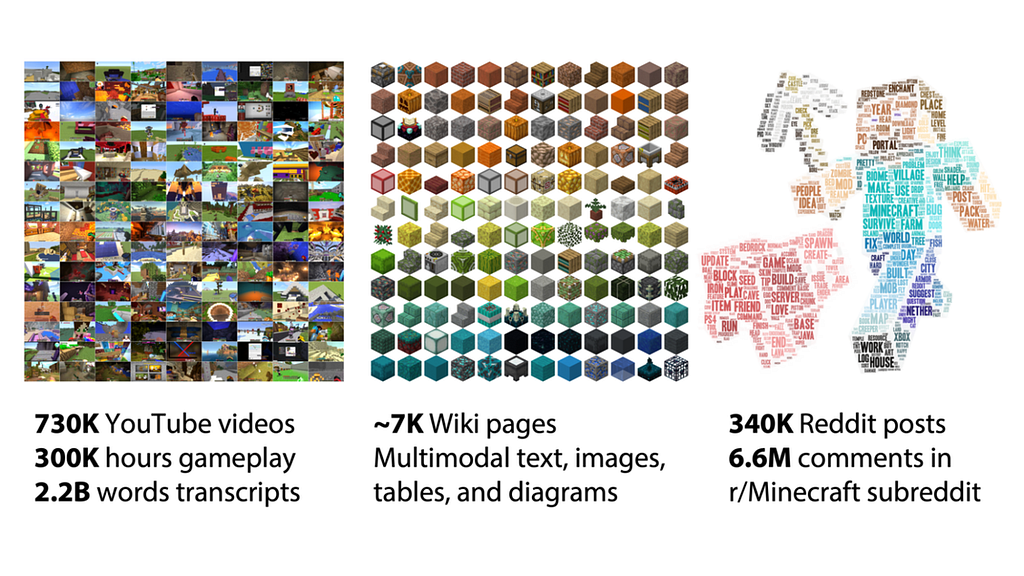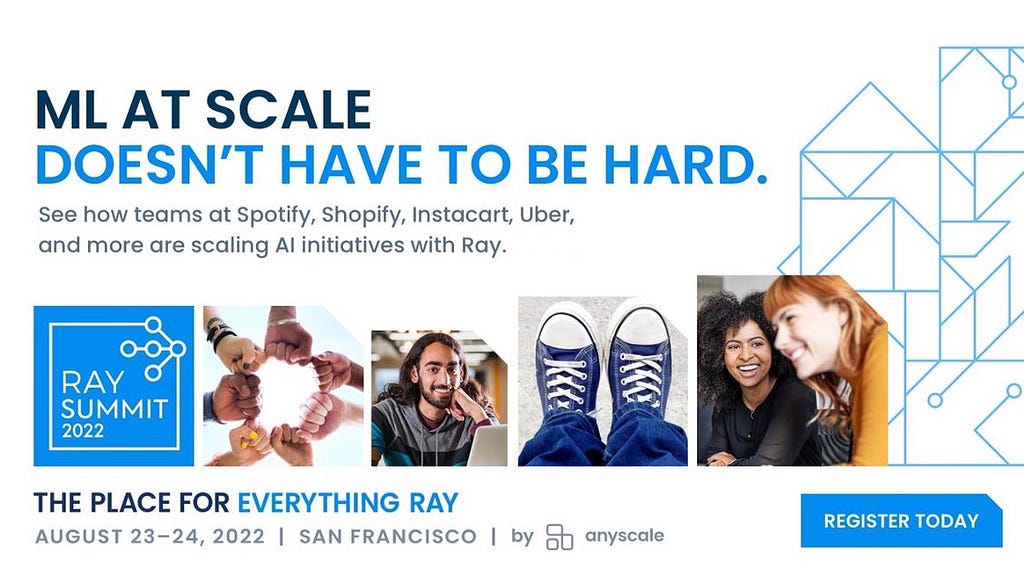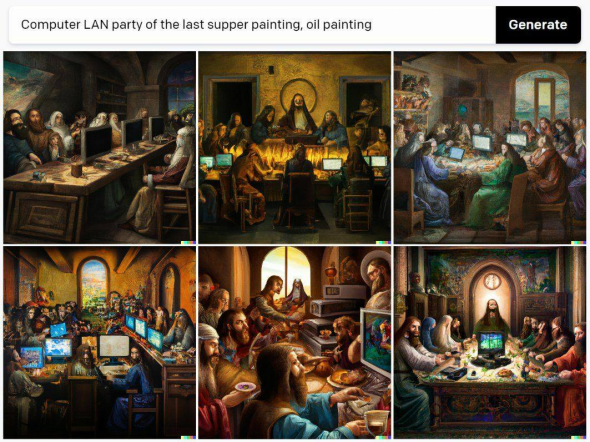
This AI newsletter is all you need | #2
Last Updated on July 15, 2022 by Editorial Team
Author(s): Towards AI Editorial Team
Originally published on Towards AI the World’s Leading AI and Technology News and Media Company. If you are building an AI-related product or service, we invite you to consider becoming an AI sponsor. At Towards AI, we help scale AI and technology startups. Let us help you unleash your technology to the masses.
Thank you everyone for the great reception to our relaunched weekly AI newsletter! In our first week, we had ~50,000 new newsletter subscriptions across our Mailchimp and Linkedin Newsletter channels. We really appreciate all the support, subscriptions and shares. We look forward to bringing you much more AI content and resources — we have lots of new projects in the pipeline!
This AI newsletter is all you need | #1
What happened this week in AI
Our AI highlight this week was definitely Minecraft. Yes, Minecraft, the video game. Minecraft is now being used to train multi-modal reinforcement learning (RL) models (models that can take multiple types of inputs like text, images, videos, tabular data…). OpenAI released a model called VPT and an open competition for NeurIPS 2022. This model aims to learn how to play Minecraft, a complex game quite close to the real world. Likewise, the competition aims to promote research in learning from human feedback to enable agents that can accomplish tasks without crisp, easily-defined reward functions. We think this competition is a great opportunity for anyone interested in RL and advancing the field — also, check out MineRL, Carnegie Mellon’s Minecraft RL research competition.
The news we share below, MineDojo (by NVIDIA), is also related to this initiative using Minecraft as an RL agent training platform, a promising framework to benchmark embodied AI agents.
Training multi-modals models on Minecraft is near perfect because you have access to a gigantic amount of text and tabular data through the Wiki and Reddit pages, lots of videos and gameplay footage on YouTube, and even video-to-text data through these same YouTube videos with their transcripts… All describe a single game the AI can “live” in and experiment with.

Hottest news
- MineDojo, a framework to benchmark embodied AI agents by NVIDIA!
Based on Minecraft, MineDojo features thousands of diverse, open-ended tasks and a massive, internet-scale knowledge base where AI agents can freely explore the many 3D worlds of Minecraft. - Can’t get enough of the Craiyon AI image generator? Try these other AI tools.
If you’ve played with the Dalle-mini app like most of us, now renamed craiyon, you will most certainly love this new article sharing many cool AI-based apps you can play with, for free. - GitHub Copilot has been made generally available to individual developers!
The AI programming assistant costs $10 per month or $100 a year and is initially free for students, available to everyone.
Most interesting papers of the week
- (Deepmind) Mastering the Game of Stratego with Model-Free Multiagent Reinforcement Learning
DeepNash, an agent trained with model-free multiagent reinforcement learning capable of learning to play the imperfect information game Stratego from scratch, up to a human expert level. - 3D-Aware Video Generation
Exploring 4D generative adversarial networks (GANs) that learn unconditional generation of 3D-aware videos with a GAN framework that synthesizes 3D video supervised only with monocular videos. Code - A Path Towards Autonomous Machine Intelligence
A very interesting paper distilling much of Yann LeCun’s thinking over the last 5–10 years about promising directions in AI. More details with an abbreviated section on his Twitter page.
Enjoy these papers and news summaries? Get a daily recap in your inbox!
This issue is brought to you thanks to Anyscale:

Did you know that teams at Google, Meta, IBM, Uber, and more are using Ray to scale critical AI initiatives? Or that the Qatar Computing Research Institute is using reinforcement learning and Ray RLlib to control congestion and facilitate mobility at FIFA World Cup 2022? Come see for yourself at Ray Summit. Register now to take advantage of the Early Bird rate — and use the code Ray20 to get an additional 20% off! Early Bird registration ends June 30.
Interested in becoming a Towards AI sponsor? Find out more information here or contact sponsors@towardsai.net!
The Learn AI Together community section!
Meme of the week!

Featured community post from the Discord
SOCKS#6109 shared a very interesting paper about hiding malware in neural networks. Something all AI students should be careful about.
This basic technique is based on the modification of the float32 values (but can be adapted to float16), where we modify the fraction bits or part of the fraction.
A very interesting user mentioned in a Reddit post:
“As I saw with my experiments, we could easily hide megabytes of code in a simple ResNet50 and get away with it. A well-trained (and generalized) network should not degrade in performance significantly. The testing of that is planned for a future post.
Also, this method could be used for watermarking neural network weights, which could help with copyright claims (e.g., someone is using your open-sourced (and appropriately licensed) weights out of the box in a commercial product).”
AI poll of the week!

TAI Curated section
Article of the week
Zero-shot vs. Few-shot Learning: 50 Key Insights with 2022 Updates: This article summarizes some of the key differences and relative advantages of zero-shot vs. few-shot learning setups. With zero-shot learning, a machine can learn from data without being explicitly taught how to do so, while with few-shot learning, a machine can learn from just a few examples.
Last week we published 18 new AI blogs and welcomed six new writers to our platform. If you are interested in publishing at Towards AI, please sign up here and we will publish your blog to our network if it meets our editorial policies and standards.
Featured Jobs this week
Senior ML Engineer — Algolia AI @ Algolia (Hybrid remote)
Senior ML Engineer — Semantic Search @ Algolia (Hybrid remote)
Machine Learning Engineer @ Gather AI (Remote — India)
Deep Learning Engineer (R&D — Engineering) @ Weights & Biases (Remote)
Machine Learning Intern @ Weights & Biases (Remote — USA)
Interested in sharing a job opportunity here? Contact sponsors@towardsai.net!
This AI newsletter is all you need | #2 was originally published in Towards AI on Medium, where people are continuing the conversation by highlighting and responding to this story.
Join thousands of data leaders on the AI newsletter. It’s free, we don’t spam, and we never share your email address. Keep up to date with the latest work in AI. From research to projects and ideas. If you are building an AI startup, an AI-related product, or a service, we invite you to consider becoming a sponsor.
Published via Towards AI
Take our 90+ lesson From Beginner to Advanced LLM Developer Certification: From choosing a project to deploying a working product this is the most comprehensive and practical LLM course out there!
Towards AI has published Building LLMs for Production—our 470+ page guide to mastering LLMs with practical projects and expert insights!

Discover Your Dream AI Career at Towards AI Jobs
Towards AI has built a jobs board tailored specifically to Machine Learning and Data Science Jobs and Skills. Our software searches for live AI jobs each hour, labels and categorises them and makes them easily searchable. Explore over 40,000 live jobs today with Towards AI Jobs!
Note: Content contains the views of the contributing authors and not Towards AI.













